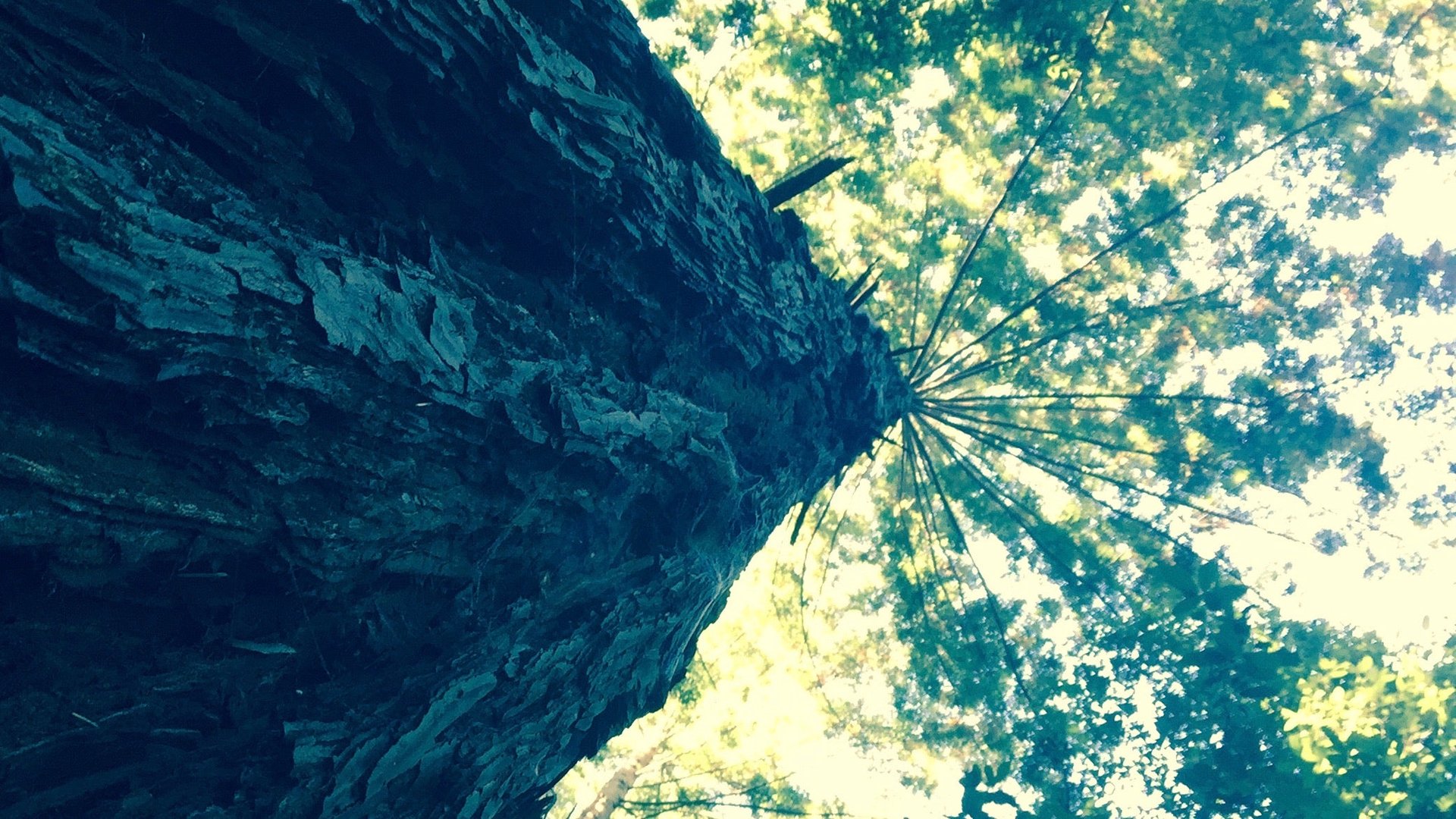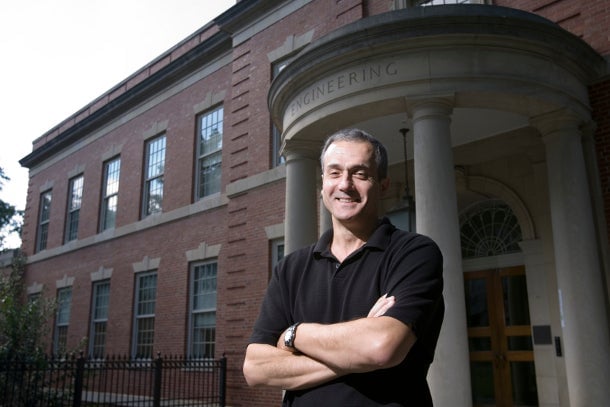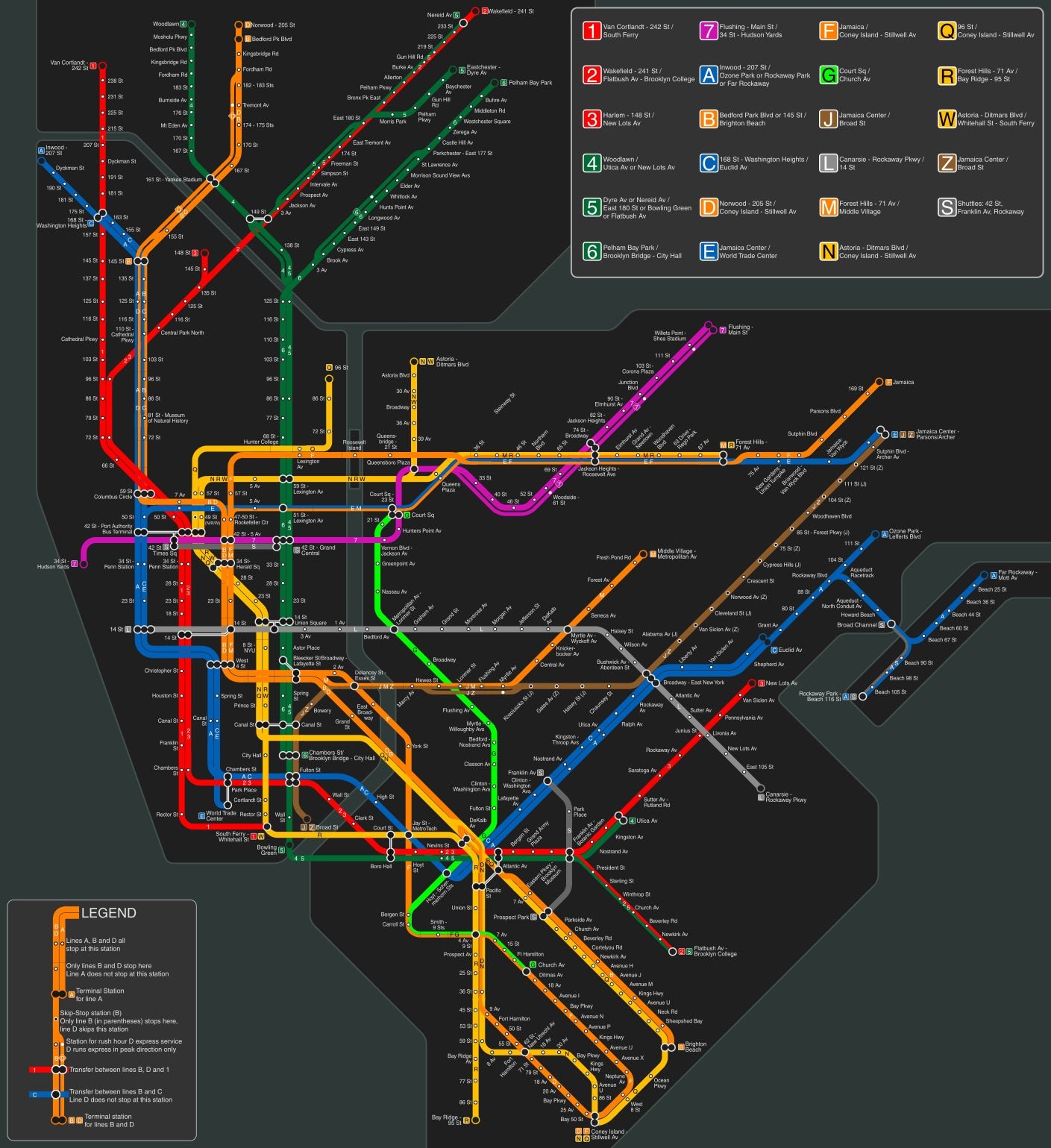Everything, including the growing income disparity, can be explained by physics
Adrian Bejan is a rebel with a cause and a good job.


Adrian Bejan is a rebel with a cause and a good job.
He’s a cheerful and weird engineering professor at Duke University who wants us all to be free thinkers, to question convention and authority, and to connect the dots across topics. He himself has tried to do just that, inventing a physics principle, the “constructal law of evolution and organization,” which he says can be widely applied to life and society to better understand how the world works.
The constructal law describes a principle in natural design: flow systems, animate and inanimate—people, rivers, trees, branches, tectonic plates, traffic, markets, and more—all act the same, in one crucial way. In order to survive, all these systems must adapt to accommodate the currents that flow through them, and they all evolve following a vascular pattern.
When applied to economics, Bejan’s constructal law is comprehensive but controversial: it says that the rich exist not because of some failure of economic systems, but because they must.
Mind the gap

The world’s population is becoming “wealthier” overall, writes Inequality.org, a nonprofit research and advocacy group of the Institute for Policy Studies, a DC-based, left-wing think tank. The conclusion is based on data from Pew Research Center showing that from 2001 to 2011, the share of the world’s poorest people, making $2 a day or less, dropped from 29% to 15%. The middle-income bracket, making $10-$20 a day, almost doubled from 7% to 13% in that same period.
There are limits to these numbers, as not all nations collect data and those that do don’t all gather the same information about their population’s wealth. Plus, the news isn’t all heartening—the divide between rich and poor is wide. The 2015 Credit Suisse Research Institute’s Global Wealth Report shows that 71% of the world holds only 3% of global wealth. The 8% percent of the global population that makes up the world’s wealthiest individuals—those owning over $100,000 in assets—boast 85% of the total global wealth.
Many would like to see that gap closed, and a totally equal society created. According to Bejan, that’s impossible, from a physics perspective.
Recently he published a paper in the Journal of Applied Physics, arguing that wealth inequality is inevitable because of, and can even be predicted by, constructal law. That’s because the distribution of all things—across the social, political, and economic worlds—is determined by vascular patterns, like those of tree branches or river tributaries, Bejan says. They fork and morph to create new streams, naturally. And, naturally, these branches and tributaries are unequal.
Bejan illustrates that hierarchy is unavoidable using Horton’s law of stream numbers, which says that three to five tributaries emerge over the lifetime of a mother stream. As the mother streams calve and then the next generation of tributaries in turn calves again, uniformity disappears. When Horton’s law’s multiplier is applied to the movement of wealth in a society, Bejan says, even modest complexity—five families in a tiny village, for example—leads to a non-uniform distribution of wealth.
That non-uniformity grows ever more complex, with more and more differences in wealth (and associated opportunities) created over time and as a society grows. Eliminating all the differences is already impossible at a small scale and grows unthinkable the larger the society.
He is not the only scientist applying the laws of physics to illuminate the social sciences. On July 17 this year, James Burridge, a math professor at University of Portsmouth published a paper in Physical Review demonstrating the relationship between surface tension and language movement to show how language dialects travel following the patterns of bubbles. Like Bejan, Burridge is applying what he knows to be true about the physical world, and positing that this corresponds to more abstract and conceptual notions like the spread of a dialect.
These efforts add a new approach to social science. They quantify abstractions and provide a means for modeling ideas. Bejan points out that he isn’t saying non-uniform wealth distribution is great, nor does it mean that we should not attempt to make more equal societies. He’s just showing that, if you believe thermodynamics are a law of nature, it’s not possible to achieve total equality.
Out on a limb

Bejan’s research began with a vision.
Most scientists don’t rely on visions—or, at least, they don’t admit as much. Generally they begin with observation, and then theorize. Bejan is an unusual academic, however. Today, he is a widely cited researcher whose work spans physical and social science, design, sports, and math. The professor has produced lots of weird research in scientific journals on strange topics ranging from the navel’s role in athletic performance to the size of fires across recorded history.
But his first adult job was as a basketball player in Romania. He doesn’t mind being different; he laughs heartily when I admit that I’m going out on a limb with this story, standing up for tree-branch economics: A colleague at Quartz has challenged me to make sense of the theory, which he finds “completely absurd.”
Bejan makes the case for his constructal law…but he doesn’t take the straight path. Discussion with Bejan branches out in many directions, flowing from one topic to another. He’s excited about ideas, and we end up talking about the state of civilization, science, mysticism, philosophy, language, history, knowledge, happiness, and what makes a great thinker. He sets no time or topic limit.
Intellectual liberty, Bejan believes, is the foundation for personal satisfaction. It helps us make sense of a seemingly senseless world, navigating contemporary society’s treacherous information deluge with little fear, confident in our ability to steer clear of propaganda. Even better, on an existential level, holistic free thinking enables us to play with ideas and with life.
Anyone can cultivate this freedom and well-being in two steps:
Step one: Question. Everything. Especially authority.
“The right questions occur to only a few people, free thinkers who have courage,” Bejan tells me on the phone conspiratorially. “People who question everything make the world better.”
By doubting conventional wisdom, great thinkers dare to conceive of new ideas that contradict what’s considered true already, and to stand behind them. Doing this requires courage, spirit, and an inclination to question, Bejan says. Questioning is just the beginning, however.
Step two: Connect the dots
Robust and rebellious thinkers also reconstruct after pulling things apart. They connect everything, seeing similarities in the seemingly disparate. This is critical to seeing a big picture and coming up with new ideas, Bejan says.
He practices what he preaches. His life experience informs his scientific study and the principles of science help form his understanding of society. The professor doesn’t distinguish—art, science, society, sports, life, the universe, all are part of the great conversation.
Portrait of the mathlete as a young man

Bejan was raised in Galati, a city on the banks of the Danube river in the Socialist Republic of Romania, in the 1950s and 60s. His mom was a pharmacist, his dad a veterinarian, and his neighbors intellectuals who delighted in chess, debate, and questioning. It was “a street full of free spirits,” he says.
Bejan attributes his delight in inquiry to the Jewish character of his neighborhood. His friends growing up lived two lives: On the one hand, they were members of a secular communist society attending public schools; on the other, they were part of a Jewish community at home, getting a Jewish education, focused on argument and analysis.
Now, he tries to teach students to think critically, to question and to debate; he wants to cultivate great thinkers, not just engineers:
I teach how to question, how to do justice to a new idea, and how to joke and not take yourself too seriously. I teach the ‘essentials’ spiced with a taste for the big picture: the history of people, science, languages, personalities, sports, the world. I teach what the words mean, where they come from, Greek, Latin, French, Italian, etc. I insert quotes and jokes from famous writers. I speak and write as if I am on the [basketball] court or in the locker room, to be understood clearly by people.
Throughout his childhood, Bejan’s father was often away in hospitals, ill. They lived near the athletic fields in Galati’s city center, and Bejan became a ball boy “of all sports,” seeking a substitute father figure. Local coaches “raised me like the orphan raised by the army as the son of the regiment,” Bejan says.
Eventually, he developed a particular passion and talent for basketball. On the basketball court, Bejan became obsessed with flow, the dynamics of the game from a physical perspective. He spent much time contemplating the ball, movement, the court, players, and all of the forces interacting. “Growing up as a player, wanting to be better (and frustrated that I was not getting better faster) made me feel the phenomenon of evolution, from sports to animal locomotion and social organization,” he says.
As a high school senior in 1965, Bejan was recruited by Politechnica, a prestigious university basketball team that played in Romania’s top league. He was the youngest athlete on this select team, playing ball for three years before winning a national math competition in 1968 and then a scholarship to MIT in the US.
In 1969, the mathlete moved to Massachusetts, where he would go on to earn three engineering degrees at MIT. Bejan gave up competitive basketball to work and supplement his scholarships, but the ideas that preoccupied him on the court became the foundation for a creative academic career.
Until 1995, Bejan was steeped in thermodynamics and mechanical engineering. But at a conference with colleagues in France, he had an epiphany while listening to Nobel Laureate Ilya Prigogine speaking about branching patterns in trees, lightning, and lungs as mere cosmic coincidences. To Bejan, the patterns were too similar to be accidental and he thought his esteemed colleague was sorely mistaken. He became obsessed with natural design, and the principles that govern these vascular patterns. It changed his understanding of the world and forced him to evolve.
In his 2012 book, Design in Nature: How the Constructal Law Governs Evolution in Biology, Technology, and Social Organization, Bejan writes:
Over time I would develop a new understanding of evolutionary phenomena and the oneness of nature that would reveal how design emerges without an intelligent designer…. The designs we see in nature are not the result of chance. They arise naturally, spontaneously because they enhance access to flow in time.
In other words, even without a god, the universe follows laws. By understanding the basic principles, we’re better equipped to operate.
The accidental Taoist

Branching happens everywhere—in nature and in cities, in the veins in our bodies and in those of plants and animals, in traffic patterns and transport maps. All living beings and the places we live—towns, cities, neighborhoods, nations, continents, Earth, the universe—are flow systems within flow systems, shape-shifting sacks that branch. They overlap, interact, and operate on each other, morphing where energy, opportunity, and forces allow for it. So it stands to reason, according to Bejan’s thinking, that markets would flow similarly, unevenly, with opportunity presenting to varying degrees, depending on countless conditions that preclude the possibility of total uniformity.
Constructal law says a system’s survival depends on its accommodation of forces and that accommodation inevitably takes the form of a vascular pattern. In other words, a system will die if it can’t make way for currents. It happens that the currents don’t affect everyone evenly.
The principle applies even to your work life. External forces dictate much of what happens in our professional lives: companies fold, markets crash, jobs are eliminated. Workers accommodate those currents, taking temporary gigs at Lyft and Uber, say, or going back to school for more education. Each of us operates within countless abstract and material systems—our homes, families, workplaces, and communities, extending ever outward. Visualize the universe this way and you might see how constructal law can help you find your ever-shifting place in and among the currents.
Bejan’s description of flow systems in physics echoes eastern philosophical notions. He’s an accidental Taoist; he says he isn’t familiar with the infamous Tao Te Ching—known in English as The Book of the Way of Virtue—a Chinese text written over 2,400 years ago, which is all about natural law, flow, and relativity. According to Lao Tzu, the sage who reputedly dictated the Tao, “the way is to the world as rivers and the sea are to rivulets and streams.”
The Tao advises we be like water and flow among currents instead of against them; in the Tao Te Ching, as in constructal law, accommodating forces and morphing willingly is key to evolution. Resistance constricts flow and blocks growth.
Though it’s good to know what you want, it’s also important to understand what is possible, where to move, and how to use resources, personally and on a grand scale. From an economic policy perspective, Bejan argues, understanding flow and the constructal law can help leaders and policymakers shape programs that account for what’s possible—a better of quality of life for all—without being distracted by idealized notions of total income equality.
Once upon a time in science

To some, Bejan’s approach amounts to economics reductio ad absurdum.
Sure, a traditional, data-driven economist may not find constructal law suitably nuanced or empirical for every professional purpose. Yet to mock Bejanian economics is in some sense to reject poetics and cerebral adventure. Bejan himself recommends and welcomes questioning.
Today academics tend to be compartmentalized professionally and conceptually, Bejan complains. “But there was a time, a few centuries ago, when the natural sciences were all one topic and people were polymaths. Everything—zoology, biology, botany, physics, the study of the world—was connected,” he says. The great historical thinkers also moved between the real and imaginary worlds. So he ignores the current conventional wisdom that we need to rely entirely on empiricism, employing instead intuition, visions, art, athletics, anything that can inform his work and understanding of the world. “To be a powerful predictor, you can’t have barriers,” he says. “Territory is for tribal chiefs, not scientists and seekers!”
Bejan insists that innovative thinkers are anti-authoritarian, intuitive, and have few rules about where their insights come from. His claims have historical support: According to biographer Walter Isaacson—who’s written about Leonardo Da Vinci, Steve Jobs, Benjamin Franklin, and Albert Einstein—creative geniuses skillfully mix observation and imagination, the seen and unseen. They make unexpected leaps between theory and reality, and across topics, finding links that are impossible for others to conceive of. Genius is often understood retrospectively but isn’t easy to spot in its time. It’s punk rock, irreverent, and wears no medals. We don’t know it when we first see it because what’s fresh is odd.
What’s more, it also seems to often be a cultivated skill borne of an open, active mind of just the kind Bejan is trying to cultivate in his students. Elon Musk, for example, is a noted expert-generalist genius. He operates in multiple fields, like automobile innovation and space exploration, with no deep insight gleaned from single-minded study in any one area. The young Musk, according to his brother Kimbal, read whatever he could on any subject, devouring two books a day on anything that came his way.
Bejan doesn’t say he’s a genius—although who’s to say he’s not? But he’s thought about greatness and what it entails. The professor takes the criticism levied at him with a grain of salt, knowing that intellectual innovators have historically met with skepticism. “Einstein, Galileo, they became icons but they were outsiders who stuck to their views and told it like they saw it,” he says. “They questioned authority!”
Doubting doubt until doubt is unsure
Questioning authority and everyone else includes questioning yourself, of course, and Bejan has had doubts about himself. About a decade ago, despite having published in a dizzying range of journals and having become an oft-cited academic, the professor felt stuck. He started to feel like he was operating in a vacuum, only writing for other scientists, many of whom seem uninterested in the great Conversation About Everything that Bejan wanted to have.
That’s why Bejan is now determined to write for a wide audience, the kind of people who don’t subscribe to Applied Physics, say. He’s in search of kindred spirits, the widely curious and slightly wild, those interested in everything; to find them, he published The Physics of Life: The Evolution of Everything in 2016.
As its title implies, the book is ambitious. It starts with the eternal question asked by philosophers and scientists and artists over the ages, “What is life?” That question was also the title of a 1944 book by the Nobel prize-winning scientist Erwin Schrodinger who attempted to answer it from a cellular and genetic perspective. In 2016, Bejan took on this topic using physics. He writes:
This book is my attempt to explore the roots of the life question by examining the deepest urges and properties of all the things that move and that, while moving, change freely. This is nature and it covers the board, from the inanimate (rivers) to the animate (animals, humans, social organization). Those urges were with us long before science emerged: the urge to live longer, to have food, warmth, power, movement, and free access to people and surroundings. I will explain why all these things are “urges,” why they happen by themselves, naturally, and why they are in each of us and in everything else that moves and morphs freely.
Bejan considers physics the “science of everything.” Natural laws explain the world, its creations, and our place in it. Understanding how nature operates, its patterns and systems, helps us not just intellectually but practically as we navigate in the world and relationships. Recognizing that entities only move in relation to one another, and understanding the nature of these relationships, enables us to minimize friction and move freely, according to Bejan.
The Physics of Life champions rebellion, questioning and connecting, deconstructing and reconstructing imaginatively. It‘s a thinker’s guide; apart from the science, it’s designed to break down barriers and build connections, to work on an intuitive and intellectual level, like art. In the book, Bejan explains that artists and scientists “are of the same species” both making “images in motion” that are received in the mind of a recipient. He writes: “I do not see a difference between art and science.”